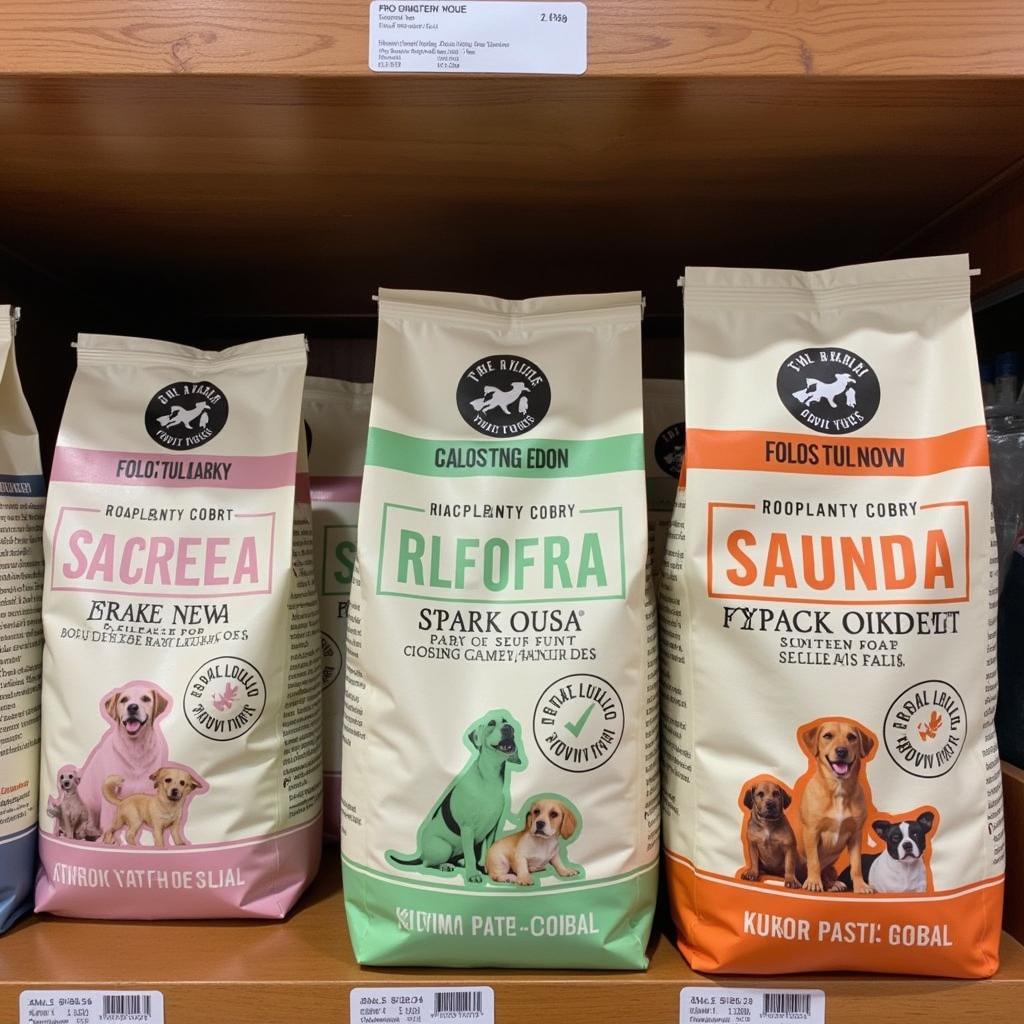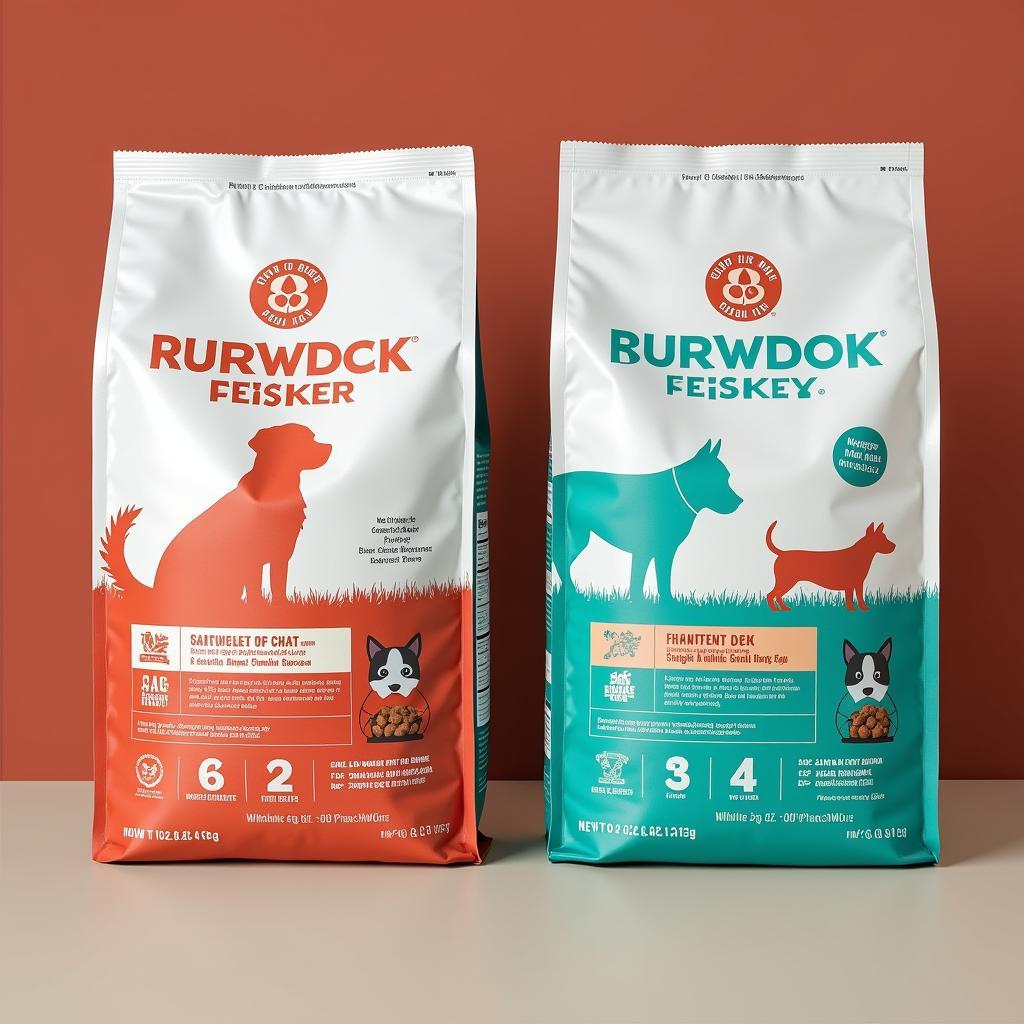Co-op dog food has been gaining popularity among pet parents, and for good reason. But with so many options available, how do you know which one is right for your furry friend? This comprehensive guide dives deep into the world of co-op dog food, exploring its benefits, drawbacks, and what to look for when making this important decision for your canine companion.
 Co-op Dog Food Options
Co-op Dog Food Options
Understanding Co-op Dog Food: What Sets it Apart?
Co-op dog food is often praised for its commitment to quality ingredients and ethical sourcing practices. Unlike some commercial brands that prioritize profits over pet health, co-op brands are often owned and operated by people who are passionate about providing nutritious and delicious food for dogs.
Benefits of Choosing Co-op Dog Food
Opting for co-op dog food comes with a variety of benefits for both you and your four-legged friend:
- High-Quality Ingredients: Co-op brands often prioritize natural ingredients, avoiding artificial colors, flavors, and preservatives that can be harmful to dogs.
- Ethical Sourcing: Many co-ops are committed to sourcing their ingredients responsibly, supporting sustainable farming practices and fair trade.
- Community Focus: Co-ops are often deeply rooted in their communities, supporting local farmers and businesses.
- Transparency: Co-op brands are typically transparent about their ingredient sourcing and manufacturing processes, making it easier for pet parents to make informed decisions.
 Happy Dog Eating Co-op Food
Happy Dog Eating Co-op Food
Navigating the World of Co-op Dog Food: What to Consider
While co-op dog food offers numerous advantages, it’s essential to choose wisely to meet your dog’s specific needs.
1. Life Stage and Breed Size
Just like with any dog food, consider your dog’s age, breed size, and activity level. Puppies, adult dogs, and senior dogs have different nutritional requirements.
2. Dietary Needs and Sensitivities
If your dog has any food allergies or sensitivities, carefully examine the ingredient list. Look for organic dehydrated dog food options or those specifically designed for sensitive stomachs.
3. Reading the Label: Decoding the Ingredients
Don’t be afraid to get familiar with common dog food ingredients. Look for whole meat sources as the first ingredient and avoid by-products, fillers, and artificial additives.
4. Budget Considerations
Co-op dog food can sometimes be more expensive than conventional brands, but remember that investing in high-quality food can lead to long-term health benefits for your dog.
Exploring Co-op Dog Food Options
Co-op brands offer a range of formulas to suit different needs and preferences:
- Dry Kibble: Convenient and shelf-stable, kibble can be a good option for many dogs. Look for air-dried dog food brands for a less processed option.
- Wet Food: Often more palatable, wet food can be a good choice for picky eaters or dogs needing extra hydration.
- Roll dog food: This unique option combines the convenience of kibble with the taste and texture of fresh food.
- ProPac dog food: This brand offers a variety of formulas, including those specifically designed for performance and working dogs.
 Reading Co-op Dog Food Labels
Reading Co-op Dog Food Labels
Transitioning to Co-op Dog Food
When switching to a new food, it’s crucial to do so gradually. Start by mixing a small amount of the new food with your dog’s current food, gradually increasing the ratio over several days.
Making the Switch to Co-op: A Rewarding Choice
Choosing the right food is a fundamental aspect of responsible pet ownership. Co-op dog food, with its emphasis on quality, ethics, and community, offers a compelling option for pet parents seeking the best for their furry companions. By carefully considering your dog’s needs and researching different brands, you can make an informed decision that supports their overall health and well-being.
Frequently Asked Questions about Co-op Dog Food
1. Is co-op dog food more expensive?
While co-op dog food can sometimes be priced higher than conventional brands, it often reflects the use of superior ingredients and ethical sourcing practices.
2. Where can I find co-op dog food?
Many co-op grocery stores and pet supply retailers carry a selection of co-op dog food brands.
3. What if my dog doesn’t like co-op food?
Just like with any food change, some dogs might be hesitant to try something new. Gradually transitioning their food and experimenting with different flavors can help.
4. Are there co-op options for dogs with specific dietary needs?
Yes, many co-op brands offer formulas tailored to dogs with allergies, sensitivities, or specific dietary requirements.
5. How can I learn more about a particular co-op brand’s practices?
Most co-op brands have websites or readily available information about their sourcing, manufacturing processes, and commitment to ethical practices.
For more insights into finding the optimum dog food for your pet, explore our other informative articles.